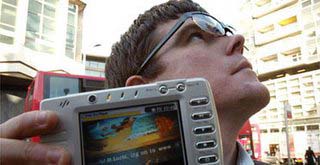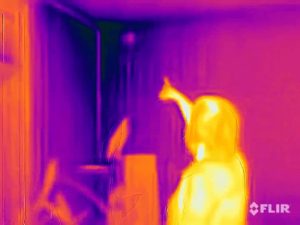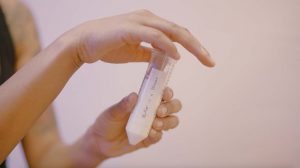Owen Gibson at The Guardian has tested The Eye Contact, a pair of spectacles developed by ID magasin. They have a camera inserted into the bridge, along with the battery pack, LCD screen and hard disk recorder strapped to the waist and they captures on film everything that you see during a typical day. Gibson wore the goggles for four hours, recording a bus and tube journey to Oxford Circus and a shopping trip up Bond Street, in London.
 The results of the experiment showed that 99% of adverts make little or no impact.
The results of the experiment showed that 99% of adverts make little or no impact.
Flicking through newspapers and magazines on the tube, the eyes flitted away from the adverts. Gibson couldn’t recall what any of them were for. And while hundreds of adverts were recorded en route, none registered without prompting.
Analysis showed that during a 45-minute journey, the journalist had been exposed to more than 130 different advertising “elements” showcasing more than 80 brands. He was “looking” at adverts for 29 minutes but couldn’t recall a single brand without prompting. When prompted, it emerged that just over half of the adverts had made an impression, those for products he was interested in and to which he was exposed for more than 10 seconds.
Over a later 90-minute period, he was exposed to 250 different advertising messages, featuring more than 100 different brands in 70 different formats. The number recalled without prompting was 1.
Via MIT advertising Lab The Guardian.
More eyeglasses: Smart glasses detect eye contact, Eyeglass-like display lets patient monitor dental treatment, Anytime head mounted display, Media-Sensitive Glasses, Parkinson’s hope over VR glasses, Electronic eye help blind people cross roads, etc.


![7 art and tech ideas I discovered at Meta.Morf 2024 – [up]Loaded Bodies 7 art and tech ideas I discovered at Meta.Morf 2024 – [up]Loaded Bodies](https://we-make-money-not-art.com/wp-content/uploads/2024/05/53705969154_73dfdfea6f_c-300x200.jpeg)




